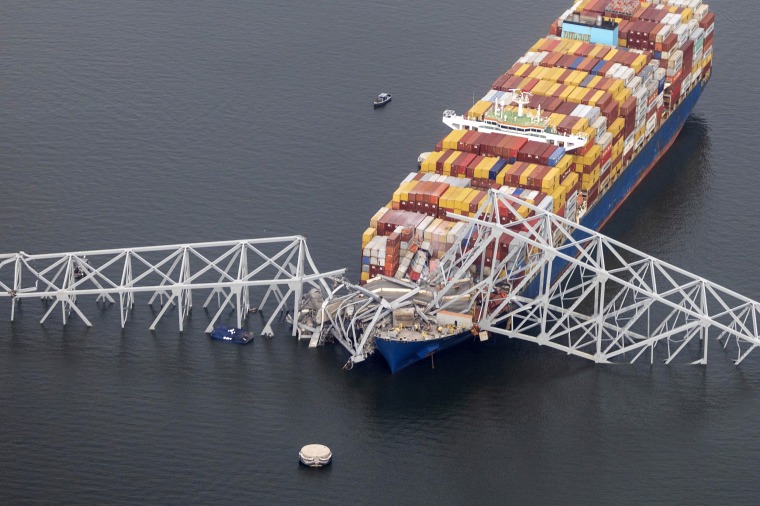Federal officials are urging risk assessments for dozens of bridges across 19 states, saying the Maryland Transportation Authority failed to perform such an evaluation before the Francis Scott Key Bridge collapsed nearly a year ago.
Baltimore’s Key Bridge fell apart on March 26, 2024, after a cargo ship passing underneath in the night struck a pillar. The accident killed six construction workers, and it took three months to remove the ship, the Dali, from the water.
National Transportation Safety Board Chairwoman Jennifer Homendy told reporters the Maryland Transportation Authority, or MDTA, "never ran" the recommended vulnerability assessment for the bridge.
"Had they ran the calculation on the Francis Scott Key Bridge, the MDTA would have been aware that the bridge was almost 30 times greater than the risk threshold AASHTO sets for essential bridges," Homendy said, using the acronym for the American Association of State Highway and Transportation Officials.
AASHTO developed the assessment in 1991, after the Sunshine Skyway Bridge in Tampa, Florida, collapsed.
At the time, AASHTO recommended that bridge owners run the risk assessment, and the warning was reiterated in 2009, according to the NTSB.
Baltimore's bridge was also built before 1994, when new bridges were required to be constructed to minimize the risk of a catastrophic collapse from a collision, according to the NTSB.
"What's frustrating is that not only did MDTA fail to conduct the vulnerability assessment on the Key Bridge, they did not provide — nor were they able to provide — the NTSB with the data needed to conduct the assessment," Homendy said.

The NTSB said in the report that had the recommended calculations been made, the state agency could have taken proactive measures to reduce the danger of a bridge collapse.
As of October, the Maryland Transportation Authority has also failed to conduct the assessment on the Chesapeake Bay Bridge, Homendy added.
The Maryland Transportation Authority said in a statement that it is reviewing the NTSB's recommendations and that it maintains the deadly collision was solely the fault of the Dali and its owners and operators.
"As requested, the MDTA will provide an update to the NTSB within 30 days, which will include any action we intend to take based on our active evaluation of the pier protection systems, operational changes, and vessel transit procedures of the Bay Bridge," the statement said.
It said the evaluation, which is being done using AASHTO methodology, was underway last fall when the NTSB requested it.
Maryland officials last month revealed their designs for a new Baltimore bridge, which would stand taller than its predecessor. It is estimated to cost $1.7 billion and finish construction in 2028.
Federal safety officials identified 68 bridges that still have unknown risk levels throughout the country and are urging their owners to conduct assessments immediately.
The level of risk does not mean a bridge collapse is imminent, but it does provide guidance about what needs to happen to ensure safe travel, Homendy said.
"Frankly, we have been sounding the alarm on this since the tragedy occurred. ... We need action," she said. "Public safety depends on it."
